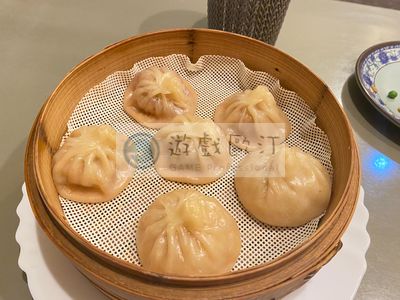聞名全球的中華美食:小籠包
小籠包是一種源自中國江南地區的傳統美食,特別在上海、無錫和南京等地廣受歡迎。小籠包以其薄皮、多汁和鮮美的內餡而聞名,是中華料理中的一道經典點心。這道美食有著悠久的歷史和文化背景,深受食客喜愛。
小籠包的種類繁多,傳統小籠包通常以豬肉餡為主,內餡加入少量湯汁,口感鮮美多汁。蟹黃小籠包是在豬肉餡中加入蟹黃,增添鮮味,是高檔的變種。雞肉小籠包則使用雞肉作為餡料,口感更加細膩,適合不吃豬肉的人群。素小籠包則以蔬菜和豆腐為主的素餡,提供給素食者。還有蝦仁小籠包,加入蝦仁,使得餡料更加豐富,口感多樣。
準備程序相當精細,需要準備餡料和麵皮兩部分。餡料一般選用五花肉,加入生薑、蔥、醬油、料酒、香油、鹽和白胡椒粉攪拌均勻,再加入高湯,使餡料呈現粘稠狀態。麵皮的製作則需要中筋麵粉、鹽和水揉成光滑的麵團,靜置30分鐘後分成小劑子,擀成圓形薄片,邊緣稍薄,中間稍厚。
製作小籠包時,將餡料放入擀好的麵皮中央,捏出摺子封口,注意手法要輕巧,摺子要多而均勻,這樣蒸出來的小籠包形狀美觀,口感更好。最後,將小籠包放在蒸籠上,大火蒸10-12分鐘即可。高湯或豬皮凍的加入是小籠包多汁的關鍵。豬皮凍可以提前製作,將豬皮煮至軟爛,加入水和調料煮成凍狀,切成小塊加入餡料。麵皮要擀得均勻,邊緣薄而中間厚,這樣蒸出來的包子不會破皮且口感更佳。捏包子時,手法要輕巧,摺子要多而均勻,這樣蒸出來的小籠包形狀美觀,口感更好。
小籠包是中國傳統美食中的一顆明珠,其製作過程雖然繁複,但最終的成品讓人感受到傳統飲食文化的魅力。無論是蟹黃小籠包的鮮美,還是素小籠包的清新,這道美食都讓人回味無窮。小籠包代表了中國飲食文化的精髓,無論是在中國還是世界各地,都擁有眾多的粉絲。
Xiaolongbao is a traditional delicacy originating from the Jiangnan region of China, particularly popular in Shanghai, Wuxi, and Nanjing. Known for its thin skin, juicy filling, and savory taste, Xiaolongbao is a classic dish in Chinese cuisine with a rich history and cultural significance that is beloved by many food enthusiasts.
Xiaolongbao comes in various types. Traditional Xiaolongbao typically features pork filling with a small amount of broth, resulting in a fresh and juicy taste. The crab roe Xiaolongbao is a high-end variant that includes crab roe in the pork filling, adding extra richness. Chicken Xiaolongbao, using chicken as the main filling, offers a more delicate flavor, suitable for those who do not eat pork. Vegetarian Xiaolongbao is made with vegetables and tofu, catering to vegetarians. Shrimp Xiaolongbao includes shrimp in the filling, providing a more diverse and rich taste.
The preparation process of Xiaolongbao is quite intricate, requiring both filling and dough. The filling generally consists of pork belly mixed with ginger, scallions, soy sauce, rice wine, sesame oil, salt, and white pepper, then combined with broth to achieve a sticky consistency. For the dough, medium-gluten flour, salt, and water are kneaded into a smooth dough, rested for 30 minutes, then divided into small portions and rolled into thin, round sheets, with the edges slightly thinner than the center.
When making Xiaolongbao, place the filling in the center of the dough sheet, fold the edges to seal, ensuring the folds are numerous and even. This careful folding results in beautifully shaped and better-tasting Xiaolongbao when steamed. Finally, place the Xiaolongbao in a steamer and steam on high heat for 10-12 minutes.
The addition of broth or pork gelatin is key to making juicy Xiaolongbao. Pork gelatin can be prepared in advance by boiling pork skin until soft, then adding water and seasonings to create a gel-like substance, which is cut into small pieces and added to the filling. The dough should be evenly rolled, with thinner edges and a thicker center, to ensure the buns do not break and have a better texture when steamed. The folding technique should be light and precise, with numerous, even folds for a visually appealing and delicious Xiaolongbao.
Xiaolongbao is a gem in traditional Chinese cuisine. Despite the complex preparation process, the final product showcases the charm of traditional culinary arts. Whether it's the rich flavor of crab roe Xiaolongbao or the refreshing taste of vegetarian Xiaolongbao, this dish leaves a lasting impression. Representing the essence of Chinese culinary culture, Xiaolongbao is loved by fans both in China and around the world.

- 1
- 2
- 3
- 4
